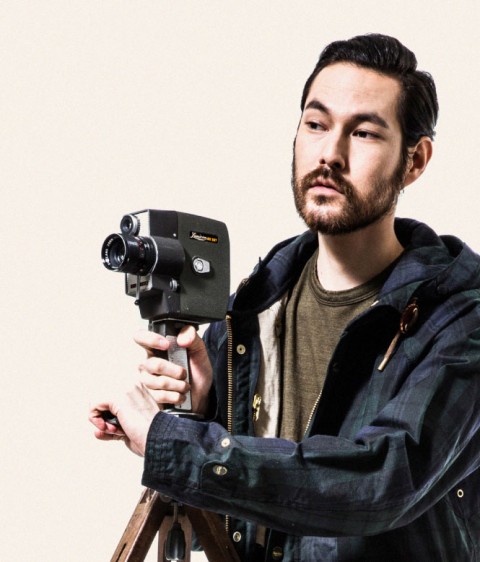As someone who grew up in Seoul, the above question never occurred to me before. I’d been all too used to passing by Korean billboards with blonde, blue-eyed couples modeling, say, my dad’s preferred domestic brand of golfwear. My eyes had grown so accustomed, passive and immune to Western foreigners modeling Asian brand apparel that I hardly even noticed. So when I was asked, “Why are most of these models white?,” I wasn’t prepared to answer. The best I could come up with was, “Because Asians think white people look better,” which is as sweeping, lazy and insensitive as anything articulated by Donald Trump – especially given that the sample of brands which led to the posed question don’t even represent the entire universe of Asian brands.
But sadly, the generalization that Asians aspire to Western beauty standards is not entirely false. Japan’s obsession with Miranda Kerr, India’s high sell-through of “Fair & Lovely” cosmetics and Thailand’s skin-whitening pills all exemplify the tendency for some Asians to want to “look white.” Even Hello Kitty, one of the most iconic animated characters to ever come out of Asia, was recently exposed to be a British student, not a cat, whose full name is Kitty White. Regardless, it would still be an obtuse accusation to point to “aspirational looks” as the sole or primary reason Asians hire Caucasian models.
It’s nearly impossible to calculate precisely what percentage of Asian brands employ white models, but it’s enough to raise eyebrows. Fair-skinned foreigners not only appear in fashion apparel campaigns, but also in magazine editorials and even television commercials for household products. This applies to many countries across East, Southeast and South Asia, namely the aforementioned Japan, India and Thailand, as well as South Korea, China and Singapore.
There’s no written rule that any brand has to use a model ethnically native to the country in which it is based. Such nonsense would actually hinder the very necessary progression toward diversity and representing minorities, especially in the fashion and beauty sectors. But if “diversity in Asia” means “more white models,” that’s a different story.
Of course, it could be said that the near majority of Asian brand models are in fact Asian. There are also examples of black or models of other race in Asian brand campaigns, it’s just that there are too few of them to be noticed. More on these later.
Digging deeper reveals several business and marketing-related factors that may influence a brand’s decision in choosing a model. Here, we consulted brand representatives, editors and models from Korea and Japan to find out why Asian brands would put forth non-Asians to represent them.
The Origins Of Brands’ Aesthetics
Successful branding requires storytelling. For a brand to solidify its image, it has to create a universe that represents a specific aesthetic or lifestyle and visually package it in a way that appeals to its target consumer. In many cases, such storytelling entails drawing from history and heritage, which also reasserts a brand’s legitimacy. That’s why so many brands, especially in the luxury and premium sportswear sectors, take such care in presenting their founding stories and milestones in their website’s pages, or why some insist on including their founding year in their logos.
But most brands in Asia lack this sense of establishment. They are much younger than their Western counterparts because contemporary forms of dress have Western origins. Genres of fashion like formal suiting, athletic sportswear, military uniform, workwear, streetwear and even Ivy League prep style all stem from Europe and North America. The same goes for the cultural and subcultural elements that are so closely tied to fashion: Hip-hop, punk rock, and skate culture, for example, are also rooted in the West. While there’s nothing unnatural about Asians in suits or polos today, it’s been merely half a century or so since they started mass-adapting them; only certain emperors, aristocrats, or foreign diplomats wore Western garb before that.
“Essentially all of the pictures on the moodboard they’re looking at are probably Western brands with white models. From pop-culture to Hollywood films, you’re always looking at white people,” says Kyuhee Baik, Brand Manager at Stussy Asia. So for some Asian labels, a Caucasian model is a way for them to dip their toes into a certain history they want to be a part of; borrowing from the heritage they don’t have.
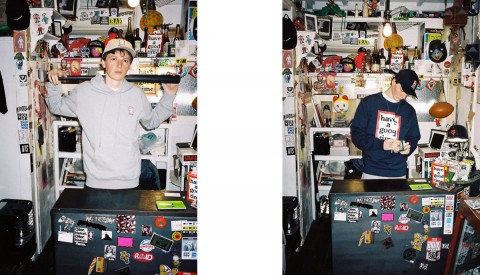
“The trend now is back to ‘80s and ‘90s style, but Asia didn’t have this style in those decades,” says Kevin Sheen, Director of footwear label Novesta, referring to the return of skate-punk-grunge thanks to the likes of Saint Laurent and Vetements. “So brands look to where that style is from, like California, for example. It might be awkward to insert an Asian model in that retro setting.”
Japanese menswear magazines are prime examples of Asians taking white models to represent their heritage inspirations. Let’s just take three of the most representative of them: Scanning Free & Easy back issues from the last six years, 50% of the time the publication used a model on the cover, he was white. Popeye had 15 model covers in the last three years (the rest were illustrations or landscape photography), and 11 of them were white (73%). Clutch, which has all of its volume covers available to view online, boasts a staggering 42 Caucasian covers in a total of 48 issues (88%). These magazines are no different from clothing brands using white models; the distinctly European or North American-looking men that grace their pages are purposely chosen to represent Japan’s fondness of American history.
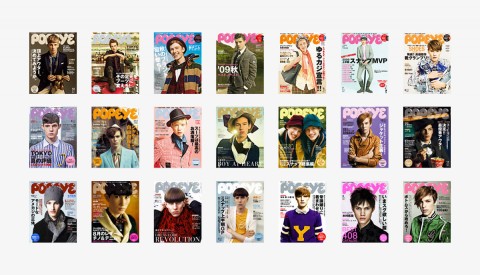
Logan Ahl, a Tokyo-based Caucasian model who has modeled for Japanese brands like Kapital, The Real McCoy’s, Old Joe, and N.Hoolywood, recognizes this. “I think Japan has many deep-rooted reasons why a foreign model would be desirable. For some of the brands I’ve worked with, especially those reproducing vintage Americana styles, I feel the purpose is more for historical context. It probably [stems] from the start of the American Occupation in Japan following the end of WWII.”
Black models sometimes take the spotlight in Asian brand campaigns if their inspiration is hip-hop or streetwear. Stereo Vinyls hired black models for its capsule collection with Wu-Tang wear, and also has Ian Connor in its list of past models. Magic Stick Tokyo is another such example, whose latest collection name is “Gangsta Paradise.” Needless to explain that African Americans are cited as the originators of hip-hop.
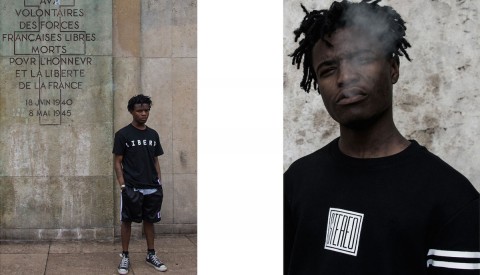
Labels who have no historical inspiration but rather a focus on contemporary style tend to hire a more diverse range of ethnicities. Brands like Dim E Cres and Name.Official — who produce modern and even futuristic items — don’t feel the need to connect to one origin story tied to a specific culture or race.
But why are so many brands still stuck in the past? There’s no distinction anymore between modern day clothing in the East and West. There’s hip-hop in Asia, preppy uniforms in Asia, and skateboarders in Asia now, too. Going for the “American/European man” origin story seems painfully outdated and cliché.
Why not just use models that the local consumers can identify with? “People like to see themselves represented… They are naturally more likely to identify with someone who looks like them, right?,” asks an editor at Singapore’s Her World Plus. This is precisely another reason why Asian brands hire white or other foreign models: Asian brands don’t define Asians as their sole target customer. Being a brand in Asia doesn’t equate to being a brand only for Asians, the same way Chanel isn’t just for the French and Zegna isn’t just for Italians. The trend of Western brands expanding Eastward is reciprocated by the trend of Eastern brands heading West. This means Asian brands competing in the current Western market, which is dominated by white model campaigns.
Brand Positioning & Market Competition
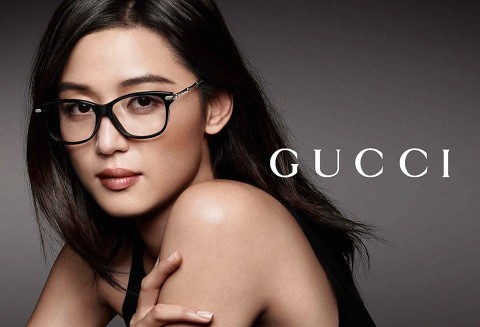
Certain European brands have made the move to hire Oriental models to resonate with customers in Asia. Chinese actress Li Bing Bing and Korean actress Gianna Jun respectively featured in Gucci’s Asia-specific accessories campaigns in 2012 and 2015. 2015 was also the year L’Oreal Paris hired its first Asian-American spokesperson, supermodel Soo Joo Park. Some brands even go so far as collaborating with Asian celebrities, like Giuseppe Zanotti who released a shoe capsule with K-Pop fashionisto G-Dragon.
Asian brands implement the same strategy when expanding Westward, just in reverse. “We want to be in North America and England,” tells Dongki Lee, designer of Eastlogue and Unaffected. Seeing their workwear and military-inspired looks, it’s easy to see why. Youngmin Lee, Creative Director of Vivastudio whose latest collection was inspired by English DJ Fatboy Slim, also aspires to expand to Europe.
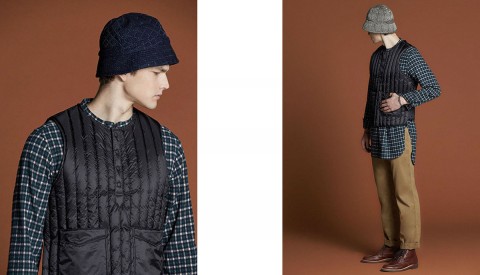
But in addition to attracting buyers local to the intended market, brands like Eastlogue have to compete with brands that already exist in that market, who are mostly European and North American. “The reason why Asian brands would want to use foreign models is that there’s pressure to compete with foreign brands. They want to minimize their visual gap and solidify their positioning,” says Taeil Park, former Fashion Editor at GQ Korea. “It’s less about how ‘better-looking’ foreign models may be than Asian models. It’s more about competing with these foreign brands, and wanting to be seen as the same kind of quality brand.” Labels representative of this type are Wooyoungmi, Juun.J, and O’2nd, who sell to Western doors like Barneys, Bergdorf Goodman, and Saks Fifth Avenue. In such stores, they are physically merchandized alongside DKNY, Maje, Opening Ceremony, Vivienne Westwood, Lanvin, Calvin Klein, Ami Paris…And their models are? Mostly white.
This leads to the current state of the Western modeling market. Fall/Winter 2013 marked Prada’s first black campaign model in nearly two decades. Dior only hired its first black campaign model, Rihanna, last year. Dolce & Gabbana was slammed for hiring a white model for its hijab and abaya collection earlier this year. According to models.com, out of the world’s current top 100 ranked male and female models, 79% are white (14% black or Hispanic, 7% Asian or mixed). Even though most fashion brands that hire these models are headquartered in Europe and North America where whites are the majority, the minority-representing percentages are still dismal.
There are two reasons Asian brands don’t limit their Western model campaigns to Western markets, like Gucci’s decision to keep its Asian actress ads to Asian billboards and magazines only. First, the contemporary and high-fashion retail environments — where Western labels dominate the floor — are similar between the East and West, so Asians compete against non-Asians in Asia as well. Second, many Asian brands simply don’t have the budget or scalability like Gucci to have multiple campaigns in one season.
High Fees For Asian Models
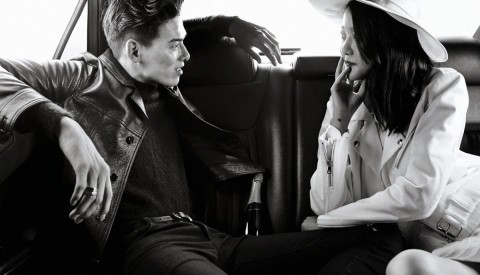
The inability of Asian brands to execute multiple campaigns unique to each market is intensified by the often exorbitantly high rates that local models demand in Asia. Model Wonjoong Kim may not be well-known enough stateside to be scouted for an American campaign, but his star power in South Korea puts him at the top of the country’s list when it comes to contracting fees. With the sudden craze over street style photography and the proliferation of social media, models — especially in Korea — have become celebrities in their own right. They’ve even started to replace more and more actors in television dramas and movies. “The reason Korean brands don’t go for Korean models might be because if they decide to go for one, they feel like they have to go for a big one, and they don’t have the budget for it,” says Baik.
Dongwon Yoo, senior editor at musinsa.com, Korea’s largest online shop and webzine for men, further explains, “Korean models have obtained celebrity status, and more of them just want to become stars. When a local model is used, that’s all people talk about — the model — and they’re uninterested in the actual brand’s clothes. Unless it’s the most popular celebrity in the country, which would require millions, I’d question whether or not hiring a known Asian model actually helps drive sales. It only creates buzz.”
The option to use lesser-known, more underground, and therefore cheaper Asian models is in conflict with the relatively small pool of them. “Too many magazines and brands call for the same ones. The choices are obvious,” says Richard Chun, International Marketing and Sales Director at PLAC.
In comparison, foreign models tend to be much cheaper. “They’re honestly considered as the ‘leftovers’ who couldn’t make it elsewhere,” says Yoo.
“The Unspoken Rule”
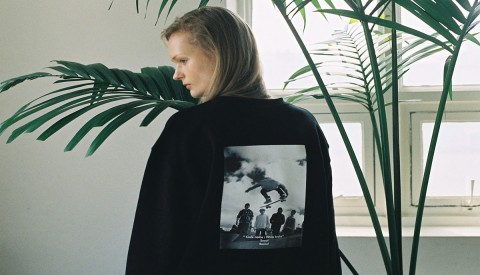
When the above three points fail to explain an Asian brand’s use of a white model, there’s only one more thing to admit. “It’s the unspoken rule that Asians are uncool,” says Chun. There’s still the mentality — especially among the elderly — that North America and Europe are better places to live; that they are more romantic and beautiful. Even medical clinics and dental offices often name themselves after a Western city or school, like “Harvard Dental” or “New York Animal Hospital.” Granted the founding doctors may have studied there, but you rarely see a hospital named after a local Asian city or school. That wouldn’t seem as modern or legitimate.
Yoo puts it another way: “For Korean brands, they just don’t want to appear domestic because they don’t want to conjure the image of Dongdaemun Market.” Dongdaemun Market is Seoul’s thriving scene of retail and wholesale clothing, mostly consisted of no-name labels and even fakes. Sadly for some, cheaply made knock-offs may first come to mind when thinking about clothing in Asia, especially from Korea and China — more of a reason an Asian brand may want to disassociate from its home country and reattach itself elsewhere. “We have a subconscious inferiority complex against Westerners. As a race, we have a tendency to think Westerners are more sophisticated than we are.”
Baik somewhat echoes this sentiment. “I think it’s an aspirational look when they use a white model. It’s like [saying], ‘hey, we made it here.”
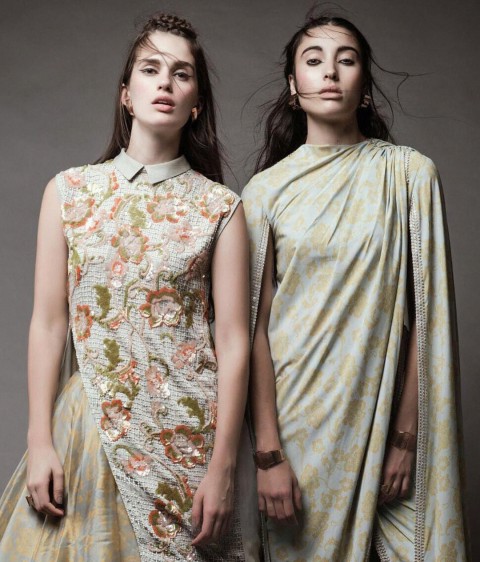
This loops back to the point that some Asians aspire to Western beauty standards, too. Why else would a Japanese detergent company, whose target is local Japanese housewives, hire Miranda Kerr to strut through the grocery aisle? Why else would Neeta Lulla, an Indian brand that makes traditional clothing, hire a white model? Even children’s fashion magazines like Milk Korea feature white babies instead of Asian ones in their editorials. And none of the three aforementioned reasons apply in these cases.
Ahl isn’t sure why. “I find myself a little generic actually, without any striking features. I think I do fit into some kind of mold the Japanese have crafted in their idea of “America” (blue eyes, brown hair, etc.), and though I have no real complaints about that, I have at times felt more akin to a cartoon than a model. When I consistently hear how small my face is, or how big my eyes are, coupled with a ‘thumbs-up,’ because to them, it’s a ‘good thing,’ I am usually at a loss as to what that actually means.”
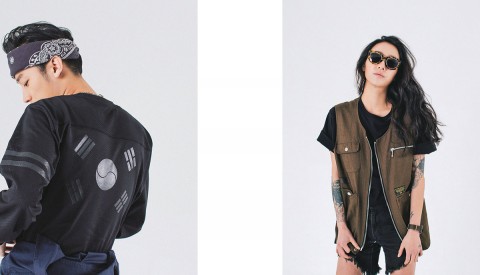
Of course, plenty of brands and magazines in Asia don’t use white models only. Take Mischief Makers and Leata, for example, who prefer local streetwear influencers or underground artists. Park tells of GQ Korea, “We represent Korea, our readers are Korean, and Korean models were more than enough to get our message across. Foreign models were not necessary.”
“There’s no right or wrong here,” says Jungjae Lee, Leata’s Brand Manager.
Given the above reasons, it certainly would be unfair to merely point fingers at Asian brands for hiring non-Asian models. But in an age when everything is global and therefore local, perhaps the “right” thing would be to diversify a bit more.
For more from Asia’s thriving fashion scene, check out 18 Korean Brands Every Highsnobiety Reader Should Know. Afterwards, find out why Hollywood whitewashed Ghost in the Shell.

